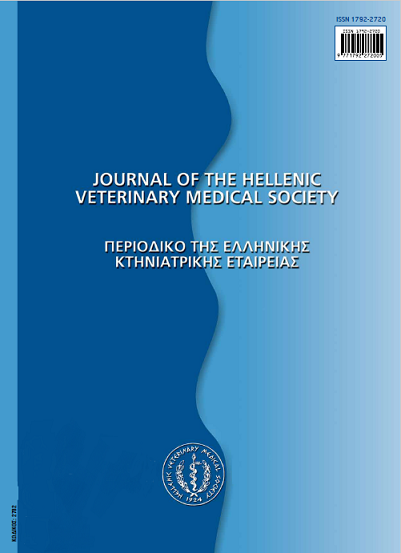Update on the emergence and pathogenesis of necrotic enteritis in broiler chickens
Аннотация
Necrotic enteritis (NE) is a disease of broiler chickens, which is caused by Clostridiumperfringens type A or C and is characterized by high mortality and severe intestinal lesions. NE is described as a disease of high economical importance which affects health and welfare of broilers and also may pose a threat to public health. Although NE was known as a disease since 1930, it did not cause serious problems to the poultry industry. The emergence of the disease occurred after 1986 in Scandinavia and 2000 in the European Union and was related with the ban of in-feed antimicrobial growth promoter. Furthermore, the ban of meat meal and bone meal from the feed of broiler chickens and their replacement by fishmeal increased further the occurrence of NE. NE breaks the Koch's postulate, which supports that "a disease-causing organism should not be present in healthy individuals", because C perfringens may be detected in high populations in the gut of birds with no visible signs of NE. Moreover, challenge of birds with C perfringens does not \eadperse to the development of the disease. It is very well accepted that NE is a multi-factorial
disease in which a number of co-factors are usually required for the proliferation and toxinogenesis of C. perfringens and manifestation of the disease. Toxin -a, since 2006, has been proposed to be the main virulence factor for NE in poultry. The origin of this assumption seems to lie to observation that crude supernatant from C perfringens type A cultures induced necrotic lesions in broilers. Moreover, the development of NE lesions prevented partially by antibodies against C. perfringens toxin -a. The interpretation of these early studies is not clear, because they used crude supernatant and the assumption was made that the effects were caused by the dominant protein present (i.e. toxin -a). However, many other proteins are also present in the supernatant of
C perfringens cultures. The most convincing evidence, that toxin -a is not essential virulence factor for the pathogenesis of NE, comes from studies using a toxin -a negative mutant (epa mutant) of a C perfringens strain from NE outbreak, which was able to produce characteristic NE lesions. Recently, netB, a novel toxin that is associated with broiler NE, has been described. A netB mutant of C perfringens was unable to cause necrotic lesions in the gut of experimentally infected broilers, but a complemented netB mutant was virulent, like the wild-type strain. However, netB per se, might not be an essential component of virulence factor for the pathogenesis of NE, because not all strains isolated from diseased birds carry the netB gene. The presence of the toxin -β2, although it has been linked with increased incidence of bovine enterotoxaemia, intestinal disorders in human, horses and diarrhea in piglets, does not seem to be involved in the pathogenesis of NE in broiler. Most C. perfringens strains isolated from cases of NE do not carry the gene (cpb2) which is responsible for the production of toxin -β2. The efficacy of antitoxin -a toxoid vaccines, the high concentration of toxin-a at the supernatant of C. perfringens culture and feces of diseased birds, as well as the high titer of antibodies against toxin-a in birds with NE, indicate that toxin -a definitely play a role, major or minor, on the pathogenesis of NE in broilers.
Article Details
- Как цитировать
-
TSIOURIS (Β.Σ. ΤΣΙΟΥΡΗΣ) V. S., GEORGOPOULOU (Ι. ΓΕΩΡΓΟΠΟΥΛΟΥ) I. I., & PETRIDOU (Ε.Ι. ΠΕΤΡΙΔΟΥ) E. I. (2018). Update on the emergence and pathogenesis of necrotic enteritis in broiler chickens. Journal of the Hellenic Veterinary Medical Society, 61(2), 144–153. https://doi.org/10.12681/jhvms.14883
- Выпуск
- Том 61 № 2 (2010)
- Раздел
- Review Articles

Это произведение доступно по лицензии Creative Commons «Attribution-NonCommercial» («Атрибуция — Некоммерческое использование») 4.0 Всемирная.
Authors who publish with this journal agree to the following terms:
· Authors retain copyright and grant the journal right of first publication with the work simultaneously licensed under a Creative Commons Attribution Non-Commercial License that allows others to share the work with an acknowledgement of the work's authorship and initial publication in this journal.
· Authors are able to enter into separate, additional contractual arrangements for the non-exclusive distribution of the journal's published version of the work (e.g. post it to an institutional repository or publish it in a book), with an acknowledgement of its initial publication in this journal.
· Authors are permitted and encouraged to post their work online (preferably in institutional repositories or on their website) prior to and during the submission process, as it can lead to productive exchanges, as well as earlier and greater citation of published work.




